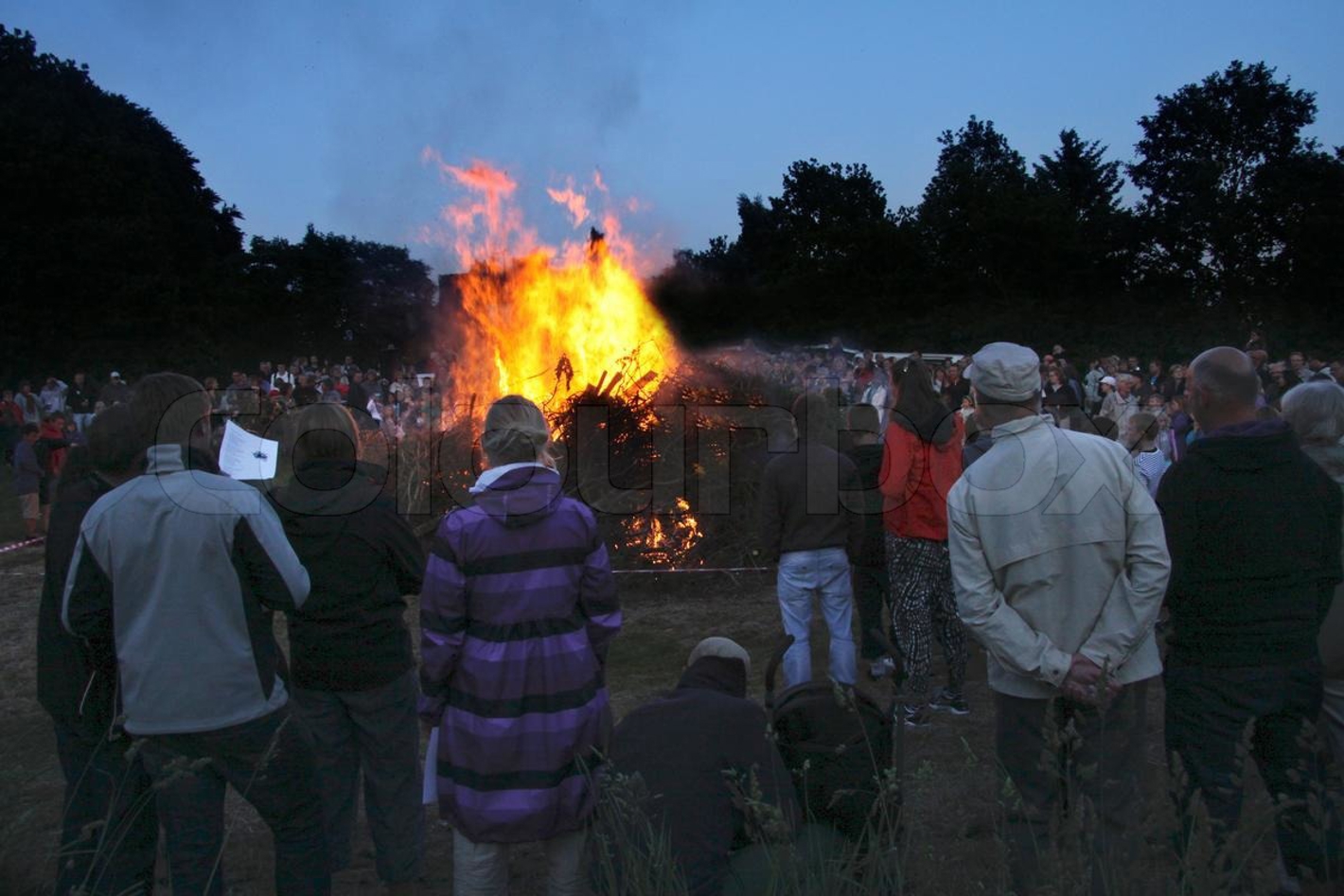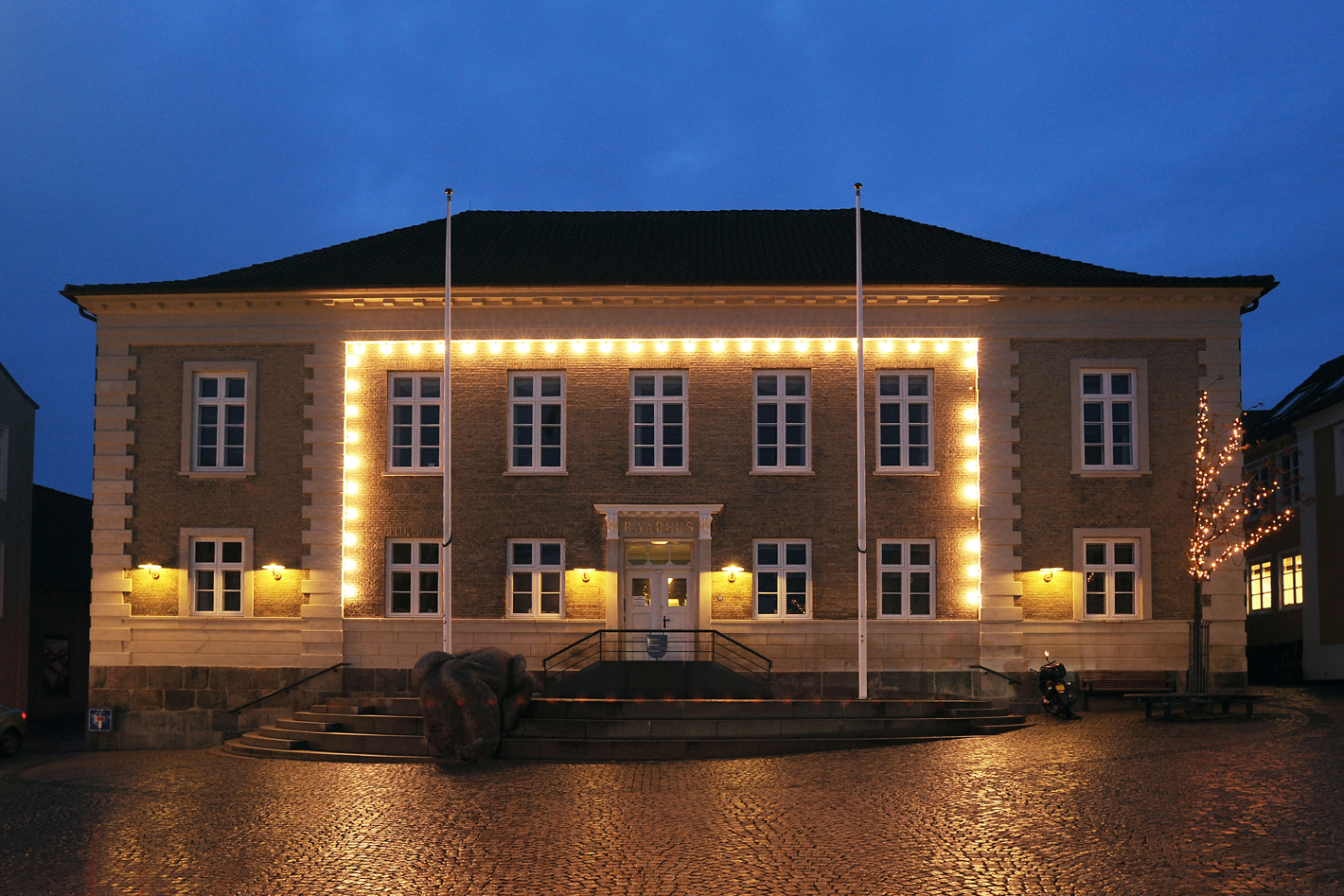Danish traditions
read about danish traditions.
Leap into the new year
The Danes line up on chairs just before midnight, as it's an old tradition in Denmark to leap into the New Year at midnight!
And it's a very important tradition: it's bad luck if you forget to jump into the new year at 12 noon sharp.
The Cat Beating - Children as Kings of the Carnival
The first important festival of the year is the carnival. On Shrove Sunday, numerous children dress up and go from house to house to improve their pocket money or sweets with their singing. Cat slapping is an extraordinary custom that results in the election of the cat king. It is about the winner of a competition in which a candy cane filled with candy is smashed out of wood.
Easter letters - a competition with Easter eggs as the main prize
The Danish Easter has certain parallels with the German variant. People mostly decorate their houses with daffodils and twigs. These are decorated with colorful Easter eggs. Children especially love the Easter letters and put a lot of effort into creating them. They artistically cut out a card and write a verse on it. The children only sign the letters with dots. Each dot stands for a letter in the name of the respective sender. The recipient has the task of guessing the name of the sender. If he succeeds, the sender is a gæk. This is the Danish term for the English word "fool". Should the receiver fail, then he is the gæk. The winner must give their opponent an Easter egg for the celebration.
Warm rolls - the Danish Penance Day in spring
On a tour of Denmark, numerous tourists notice that the Danish Penance Day is not celebrated in November, but on the fourth Friday after Easter. On the evening before the Penance Day and on the actual day, numerous Danes eat warm rolls. There is a very special tradition on this holiday in the capital of Copenhagen. Many people go to the old city wall and listen to the sounds of the bells.
Sankt Hans Aften - a holiday of great popularity
The most popular holiday of the year in Denmark is called Sankt Hans Aften. This is the birthday of John the Baptist. Most Danes meet at large bonfires where they also burn a “witch” to commemorate Midsummer's Eve. They celebrate with singing, dancing and delicious meals until the early hours of the morning. The highlight of the festival is the Fire Speech, which has a symbolic character today. It is mostly about political issues, while in the past the power of fire was supposed to rid people of evil.
The week of June when all Danes want to be high school graduates
In the last week of June in Denmark you will most likely come across a group of teenagers wearing our iconic student hats. These teenagers have just graduated from high school and for the following weeks they will be wearing the white caps everywhere they go. There are many different rules as to what gets written and cut on the caps - if you ask any of the graduates about them, they're usually more than willing to explain everything to you!
One of the most traditional ways to celebrate graduation is hard to miss: during the last week of June, the streets are filled with large, decorated trucks as graduating classes celebrate together, stopping by each of their classmates' homes for a bite to eat and to do drink.

J-dag – or: The start of the Christmas season in Denmark
"J-dag" is an abbreviation for "julebrygsdag", which literally means "Christmas Beer Day". J-dag was introduced by the Danish brewery Tuborg in 1990 to launch the Christmas beer of the year. Since then it has been a Danish tradition that more or less starts the Christmas season in Denmark.
J-dag falls on the first Friday in November every year and starts at exactly 8:59 p.m. Over time, the J-dag has developed into a Danish Christmas tradition, celebrated in bars and pubs across the country.
When does the Christmas countdown start?
The Christmas countdown begins on December 1st with the lighting of the calendar candle for the first time. The traditional calendar candle is numbered from 1 to 24 and the daily burning ritual shows how many days are left until Christmas. In addition, the cute pack calendars are finally being used. In this Advent tradition, 24 small surprises are individually wrapped and one can be opened every day. But the “kalendergave” is also popular. The gifts are larger or more valuable, but they are only available on the Sundays in Advent!
Why the Danes love Saint Lucia so much
The Norse Saint Lucia festival is celebrated across Scandinavia on December 13th and starts early in the morning. Young girls wrap themselves in long white robes and the chosen Queen of Light, Lucia, wears a crown with glowing candles. They all sing the famous song "Santa Lucia" together during a procession.
According to lore, they bring the light into the darkness.
What Danish customs are there?
You will experience magical winter landscapes, Christmas markets, Santa Lucia parades, Christmas events and customs. It is even claimed that without “nisser” or an imp, there would be no Christmas celebrations. The little goblins can be found as decorations in every apartment and their owners strive to appease the “nisser”. If this does not happen, they will become a real nuisance. The Julemand also brings the gifts here and the Danish Santa Claus comes from Greenland.
What celebrations take place during Advent?
During the entire pre-Christmas period, families, friends, colleagues and companies invite you to a convivial Julefrokost. This is a Christmasparty where you will be served with typical winter and Christmas specialties. Of course, special Christmas beers, schnapps and mulled wines should not be missing.
What do Danes eat on Christmas Eve?
Bon appetit or Velbekomme!
Christmas in Denmark also means good food. A must at the classic Christmas dinner are the following dishes: Baked Christmas ham, duck or goose, potatoes, glazed potatoes and matching sauces. For dessert follows the famous rice pudding Risalamande, in which an almond is hidden. Anyone who finds these in their portion of rice pudding will be lucky in the coming year and often receive an additional Christmas present.
What the Danes look out for on December 24th
Across the country, Christmas Eve is associated with much excitement. To shorten the time for giving presents, Christmas Disney films are shown in the living rooms. Then the church calls for the Christmas service and even those who do not like the church attend mass on this day. Back home, everyone dances around the Christmas tree and sings carols like “Højt fra træets grønne top”. The time has finally come for the distribution of gifts and the cheering will not end.

